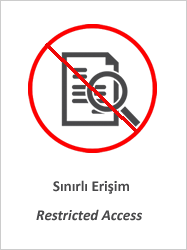Role of Mechanically Alloyed Materials in Energy Storage and Automotive Applications
Citation
KHAN, Hamaid Mahmood. "Role of Mechanically Alloyed Materials in Energy Storage and Automotive Applications". Mechanical Alloying of Ferrous and Non-Ferrous Alloys, (2024): 281-306.Abstract
Due to global apprehensions surrounding environmental sustainability and the push
for cleaner transportation, there has been a noticeable upsurge in the demand for
effective energy storage systems and advanced materials in automotive applications
(Suryanarayana & Al-Aqeeli, 2013; Suryanarayana et al., 2001). This has prompted
a shift in the world’s attention towards the exploration of novel materials and innovative
processing techniques capable of addressing the aforementioned challenges.
p0015 Mechanically alloyed (MD) materials have emerged as a noteworthy category of
materials receiving considerable recognition in energy storage and automotive
applications (Neikov, 2019). Also referred to as ball-milled or mechanically milled
materials, MD materials are produced using a solid-state powder processing technique
that entails iterative cycles of cold welding, fracturing, and/or re-welding of
powders within a high-energy ball mill. This causes the formation of distinctive
nanocrystalline or amorphous structures, exhibiting properties that deviate from
those observed in conventionally prepared materials (Wang & Zhang, 2023).
p0020 Research findings have extensively outlined the exceptional attributes of MD
materials when compared to their base counterparts. These attributes include
enhanced mechanical strength, improved electrical and thermal conductivity, augmented
surface area, and outstanding chemical stability (Dudina & Bokhonov,
2022). The ability to precisely control the composition, microstructure, and final
morphology of MD materials, a structure with tailored properties can be obtained
for specific applications.



















